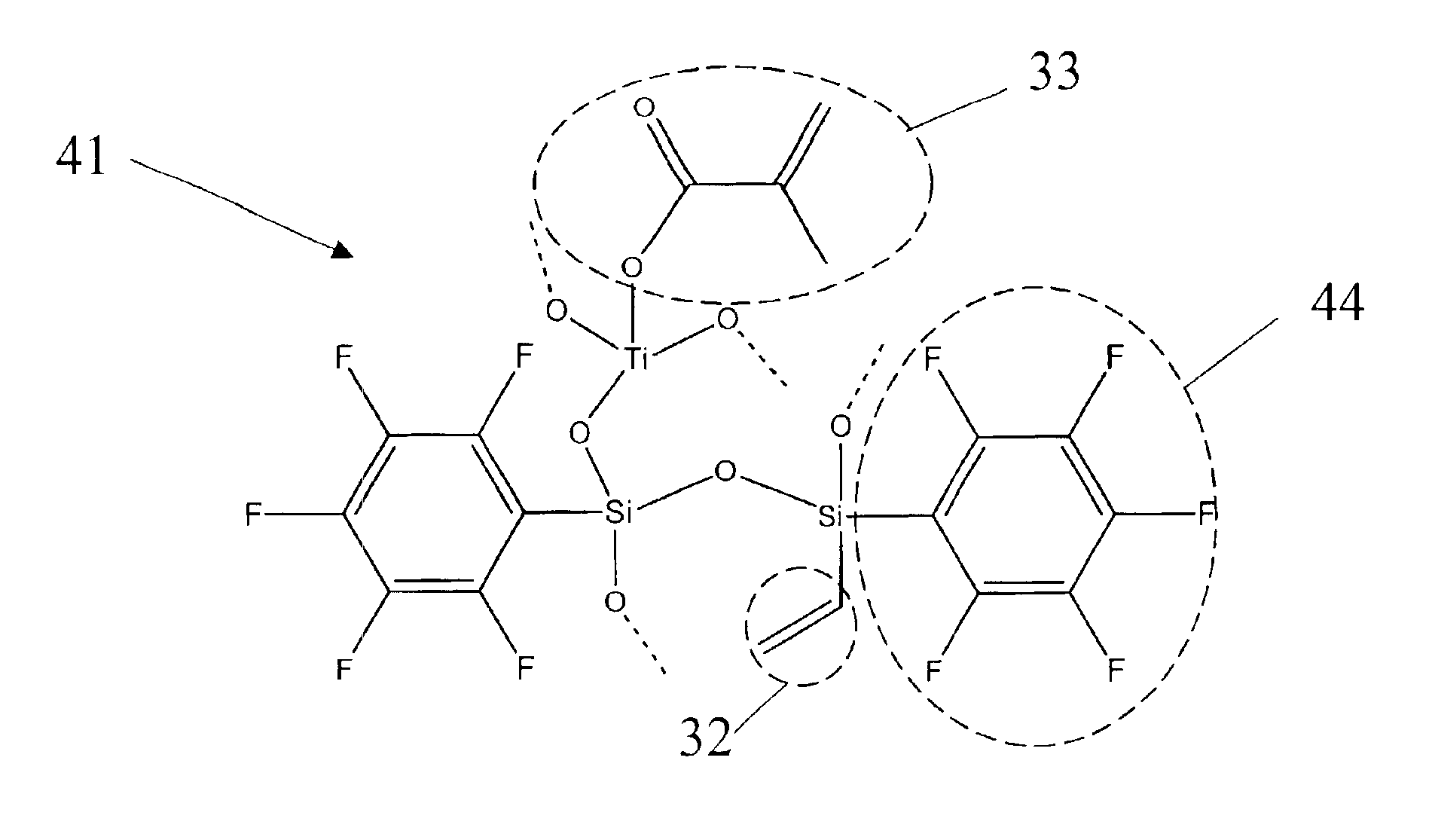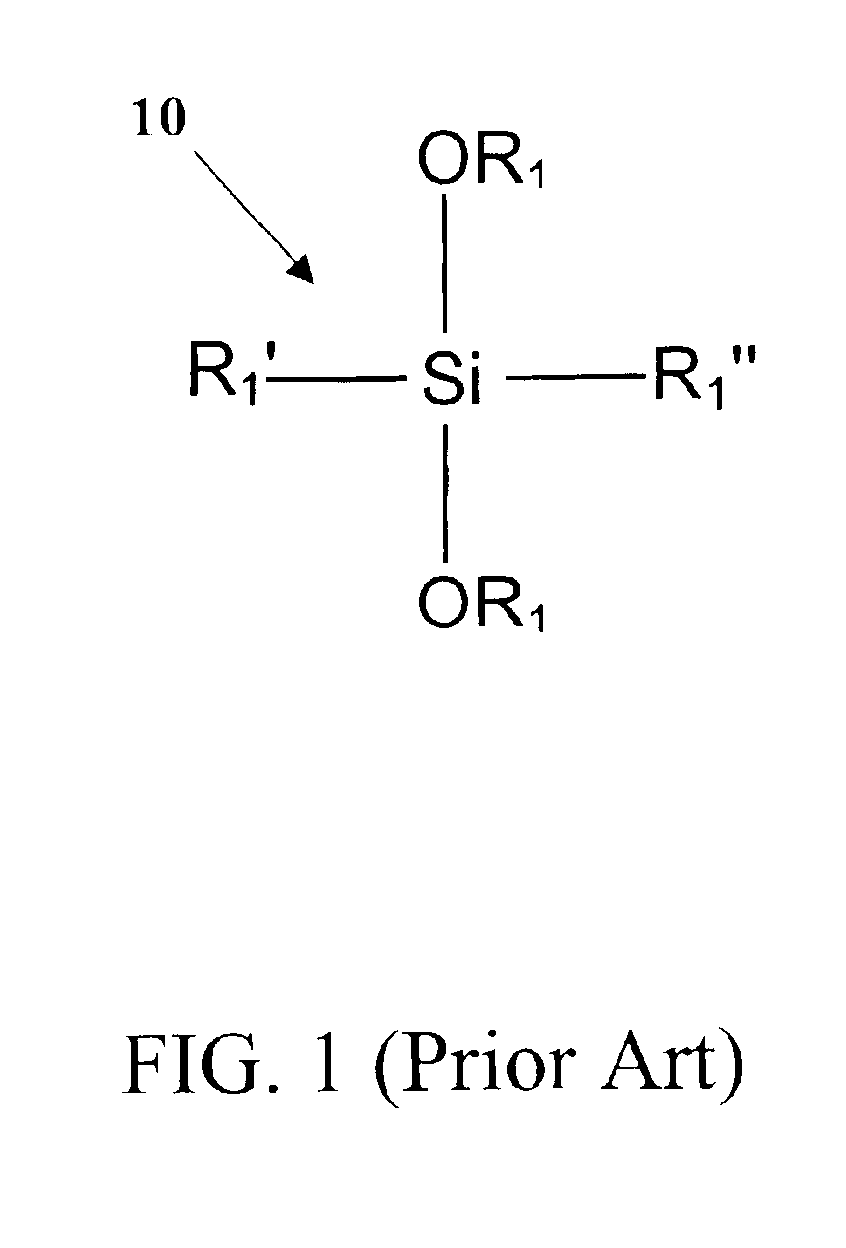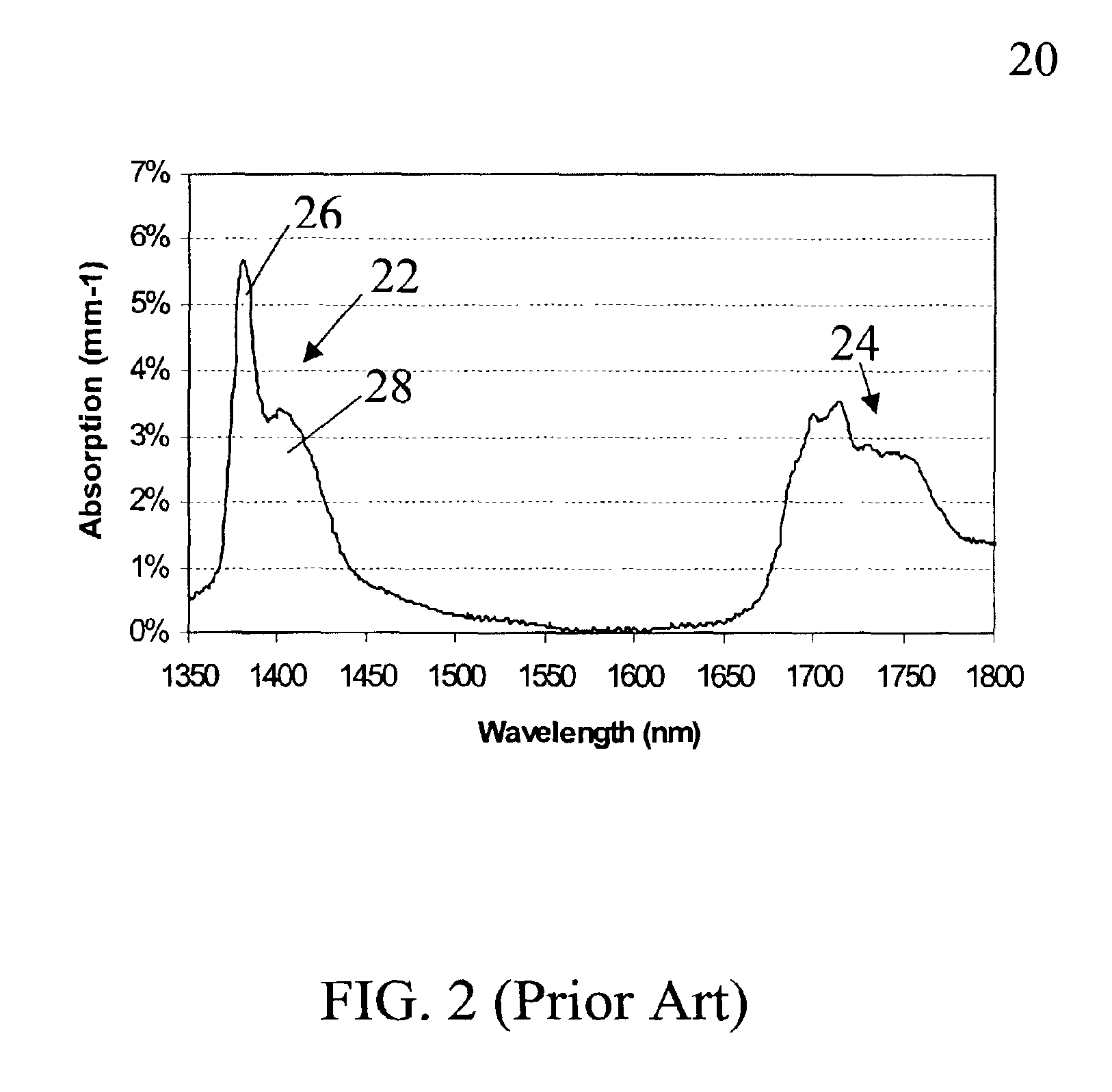Photo-patternable mono-phase fluorinated organometallic sol-gels for integrated optics and methods of fabrication
a mono-phase fluorinated, organometallic silane technology, applied in the field of photopatternable perfluorinated organometallic silane solgels, can solve the problems of increasing the scattering loss of the waveguide, complex and difficult implementation of ion implantation techniques, and not being compatible with standard silicon processing, etc., to achieve low bending loss and high refractive index
- Summary
- Abstract
- Description
- Claims
- Application Information
AI Technical Summary
Benefits of technology
Problems solved by technology
Method used
Image
Examples
example 1
[0051]The sol-gel 41 described in FIG. 4a is prepared by mixing 2.31 ml of pentafluorophenyl triethoxy silane with 0.2 ml of aqueous (0.01 M) HCl and stirring for 30 minutes. 2.09 ml of pentafluorophenyl vinyl diethoxy silane is added and the solution is stirred for another 30 minutes. 0.16 ml of aqueous (0.01 M) HCl is added, stirred for 30 minutes, and 0.6 ml of tributoxytitanium methacrylate is added. The solution is stirred again for 30 minutes. 0.03 ml of H2O is added and the solution is stirred for 16 hours at ambient conditions. To obtain completely co-oligomer sol, all released solvents due to hydrolysis reaction are removed by rotavapor under reduced pressure 5 Torr for 60 min. After solvant removal, highly viscous co-oligomer sols with Ti surrounded by Si are obtained. The solution is aged for several hours, diluted with 5 ml of ethanol (Volume ratio of precursor and solvent is 1:1) and stirred for a few minutes, followed by adding 0.66 ml of H2O to complete hydrolysis. Af...
example 2
[0052]The preparation is carried out as in Example 1 except that pentafluorophenyl trimethoxy silane is used as a starting precursor. Since the molecular weight and density of each precursor is different, the relative volumes of precursors, aqueous HCl and water have to be adjusted for each composition to maintain the relative number of molecules per unit volume of all the constituents constant. In this example, 2.01 ml of pentafluorophenyl trimethoxy silane is mixed with 0.17 ml of aqueous (0.01 M) HCl and stirred for 30 minutes. 2.32 ml of pentafluorophenyl vinyl diethoxy silane is added and stirred for another 30 minutes. 0.17 ml of aqueous (0.01 M) HCl is added. After stirring the solution for 30 minutes, 0.67 ml of tributoxytitanium methacrylate is added. The solution is stirred again for 30 minutes. 0.04 ml of H2O is added and the solution is stirred for 16 hours at ambient conditions. To obtain completely co-oligomer sol, all released solvents due to hydrolysis reaction are r...
example 3
[0053]In this example, 2.6 ml of pentafluorophenyl triethoxy silane is mixed with 0.18 ml of aqueous (0.01 M) HCl and stired for 30 minutes. 1.72 ml of pentafluorophenyl vinyl dimethoxy silane is added and the solution is stirred for another 30 minutes. 0.18 ml of aqueous (0.01 M) HCl is added. After stirring the solution for 30 minutes, 0.68 ml of tributoxytitanium methacrylate is added. The solution is stirred again for 30 minutes. 0.04 ml of H2O is added and stirred for 16 hours at ambient conditions. To obtain completely co-oligomer sol, all released solvents due to hydrolysis reaction are removed by rotavapor under reduced pressure 5 Torr for 60 min. After removal of solvents, highly viscous co-oligomer sols with Ti surrounded by Si are obtained. The solution is then aged for several hours, diluted with 5 ml of ethanol (Volume ratio of precursor and solvent is 1:1) and stirred for a few minutes, followed by adding 0.78 ml of H2O to complete hydrolysis. After 30 minutes 0.03 ml ...
PUM
| Property | Measurement | Unit |
|---|---|---|
| Force | aaaaa | aaaaa |
| Nanoscale particle size | aaaaa | aaaaa |
| Nanoscale particle size | aaaaa | aaaaa |
Abstract
Description
Claims
Application Information
 Login to View More
Login to View More - R&D
- Intellectual Property
- Life Sciences
- Materials
- Tech Scout
- Unparalleled Data Quality
- Higher Quality Content
- 60% Fewer Hallucinations
Browse by: Latest US Patents, China's latest patents, Technical Efficacy Thesaurus, Application Domain, Technology Topic, Popular Technical Reports.
© 2025 PatSnap. All rights reserved.Legal|Privacy policy|Modern Slavery Act Transparency Statement|Sitemap|About US| Contact US: help@patsnap.com



